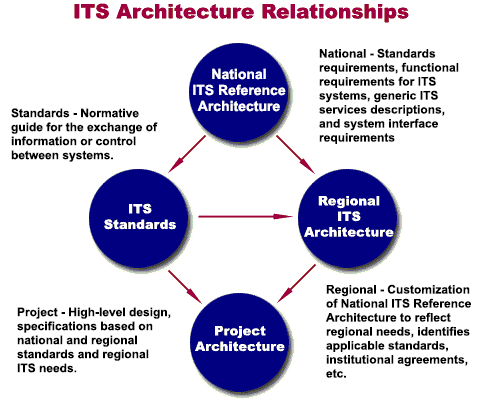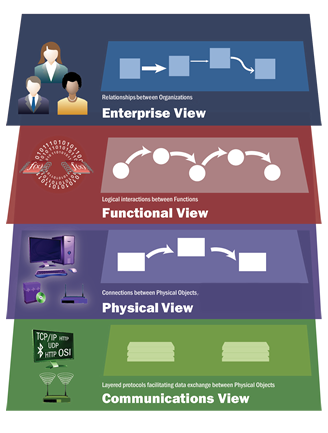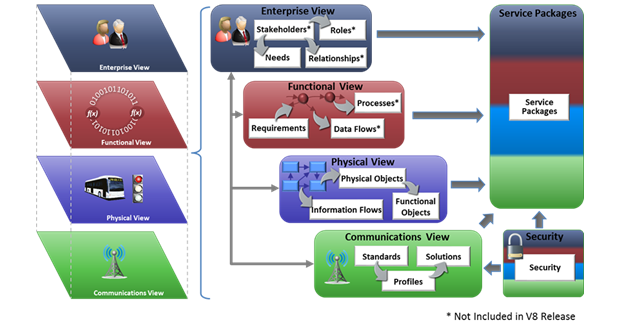About ITS Standards
National ITS Reference Architecture
What is it? | Connecting Standards | Connecting to Regional & Project Architectures
What is the National ITS Reference Architecture?
The National ITS Reference Architecture, also known as the “Architecture Reference for Cooperative and Intelligent Transportation” or simply “ARC-IT” provides a common framework for planning, defining, and integrating intelligent transportation systems. ARC-IT is a reference architecture providing a common basis for planners and engineers with differing concerns to conceive, design and implement systems using a common language as a basis for delivering ITS, but does not mandate any particular implementation. ARC-IT includes artifacts that answer concerns relevant to a large variety of stakeholders, and provides tools intended for transportation planners, regional architects and systems engineers to conceive of and develop regional architectures, and scope and develop projects. ARC-IT includes a set of interconnected components that are organized into four views that focus on four different architecture perspectives: Enterprise, Functional, Physical, and Communications.
ARC-IT Version 9.1 is the current release of the National ITS Reference Architecture. ARC-IT Version 9.1 fully defines and upgrades the four architecture views, focusing on improvements that support design and requirements specification. Learn more about the recent enhancements for ARC-IT. Learn more about the most significant enhancements for Version 9.0.
Architecture Reference for Cooperative and Intelligent Transportation (ARC-IT)
Connecting ITS Standards to the National ITS Reference Architecture
One of the main goals for the creation of the National ITS Reference Architecture (ARC-IT) was to define the key interfaces for standardization. Information flows (and their constituent detailed data flows) serve as the basis for much of the standards work on the ITS Standards Program. ITS Standards have been developed for many of the information flows in ARC-IT, and this mapping of standards to information flows is available in the Physical View on the ARC-IT website. By selecting an information flow triple, potential ITS and other communications standards to consider during deployment are listed on the Communications Diagrams.
Within the framework of the National ITS Reference Architecture, ITS standards developers can identify standards for development that will meet the user’s needs, ITS planners can integrate regional ITS elements using these ITS standards and achieve their interoperability goals, and ITS deployers can select the ITS standards that reduce risk to their deployment and thus help to manage costs and schedule.
Connecting ITS Standards to the Regional and Project ITS Architectures
ITS planners, deployers and other stakeholders tailor the National ITS Reference Architecture (ARC-IT) to create Regional ITS Architectures that meet their specific needs. Regional ITS Architectures therefore consist of functions within ITS elements and information flows that interconnect each of the ITS elements in the region (and with ITS elements outside the region). Since information flows are mapped to ITS standards in ARC-IT, and since a Regional ITS Architecture is based on ARC-IT, the standards mapping to information flows is also readily available. The same holds true when developing ITS Architectures for a project.


